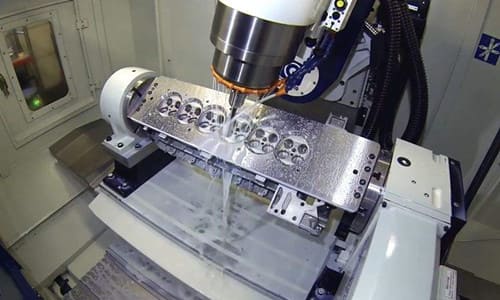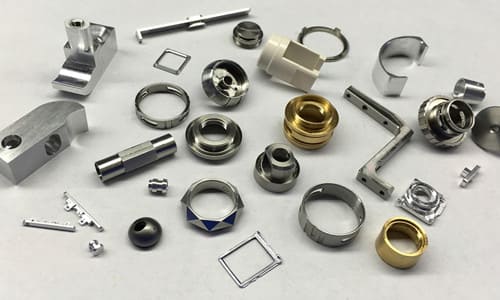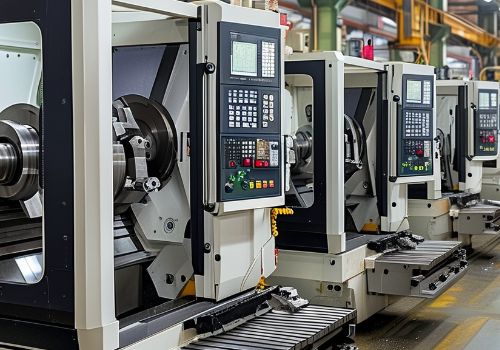We all know that dynamic machining technology can be used to improve CNC machining efficiency when CNC roughing. So in the more time-consuming CNC finishing process, is there any way to improve processing efficiency?
The purpose of CNC finishing is to ensure the final dimensional accuracy and surface quality of the workpiece. To improve the efficiency of finishing, it is necessary to consider the two aspects of finishing surface quality and finishing time.
First, let’s analyze the surface quality of finishing, which depends largely on the height of the residual ridge left after processing.
1. What is the height of residual ridge?
The height of the residual ridge refers to the maximum height of the convex part of the residual material after the tool passes through two adjacent tool paths during processing.
2. How to reduce the height of the residual ridge?
One feasible method is to reduce the step over and reduce the distance between adjacent tool paths. But this means increasing the number and density of tool paths per unit area and increasing the time for finishing. Therefore, in 3D surface CNC finishing process, everyone will feel that there is a dilemma between “surface quality” and “processing time”.
Better surface quality = longer processing time.
Another feasible method is to use a larger tool. Because the larger the tool radius, the greater the arc at the contact point when it comes into contact with the material. Under the same tool path density, the obtained ridge height is smaller.
3. Use a large radius tool or a small radius tool?
Using a tool with a large radius can reduce the height of the residual ridge and achieve a better surface quality. But a new problem has emerged: many workpieces need to be finished with narrow gaps, and they cannot be processed with large radius tools.
Large radius tool CNC finishing:
Advantage:
Smaller residual ridge height; Shorter cycle time
Disadvantages:
No small gap area can be processed; Easy to interfere, complicated to program
Small radius tool CNC finishing:
Advantage:
Easy to program; Can be processed into small gap areas
Disadvantages:
To achieve better surface quality, you need to reduce the step distance and increase the tool path density; Longer processing time
4. Is there a better way
Is there a way to integrate the advantages of the two and avoid their disadvantages?
The answer is: yes.
A careful analysis of the formation process of the residual ridge height reveals that the residual ridge height is actually related to the arc radius of the contact point between the tool and the material, and has little to do with the tool radius itself. If you only increase the arc radius of the effective machining part of the tool, while keeping the size of the tool body radius unchanged, you may be able to achieve the two purposes of improving the surface quality and shortening the finishing time at the same time.
In fact, some tool manufacturers have begun research in this area, and have introduced a variety of large radius arc tools suitable for different processing scenarios.
5. Can we start machining with the tool?
As mentioned earlier, changing the shape of the tool, increasing the arc radius of the contact point between the tool and the material during processing, and reducing the height of the residual ridge left by the CNC finishing process can greatly reduce the number and density of tool paths required in the finishing area. The processing time is greatly reduced and the production efficiency is improved.
But a new problem is here again: the shape of the effective machining radian on this type of large arc milling cutter is complex, and the tool path must be compensated based on the complex shape of the tool to make the large arc of the tool fit the processing position accurately to meets the requirements of surface quality in finishing. How should such a tool path be programmed?
This requires the support of CAM software in programming. Mastercam’s Accelerated Finishing TM super-string finishing technology is a programming solution for efficient finishing using circular arc tools. It can dynamically compensate the tool contact points in the machining process based on the shape of the tool and through special tool path algorithms for large arc tools of various shapes, and can make full use of the shape of the arc tool to perform high-precision and high-efficiency finishing.
As a professional CNC machining manufacturer, DO Machining not only produce metal parts, but plastic and wood parts are also available.
Please visit our CAPABILITIES and what PRODUCTS we did.
CNC machining service is the core business of DO Machining, from protptyes to bulk production, our professional 3/4/5 aixs CNC machining centers, CNC turning equipments, CNC turning-milling equipments, CNC grinding machines etc., are operated by well trained manufacturing engineers to meet the demands from global 1000+ customers in 30+ industries.
CNC Machining can be done starting with blanks produced from standard bar stock or one of DO Machining other manufacturing processes.
Contact us to see how we can provide overall value to your CNC machining needs.











